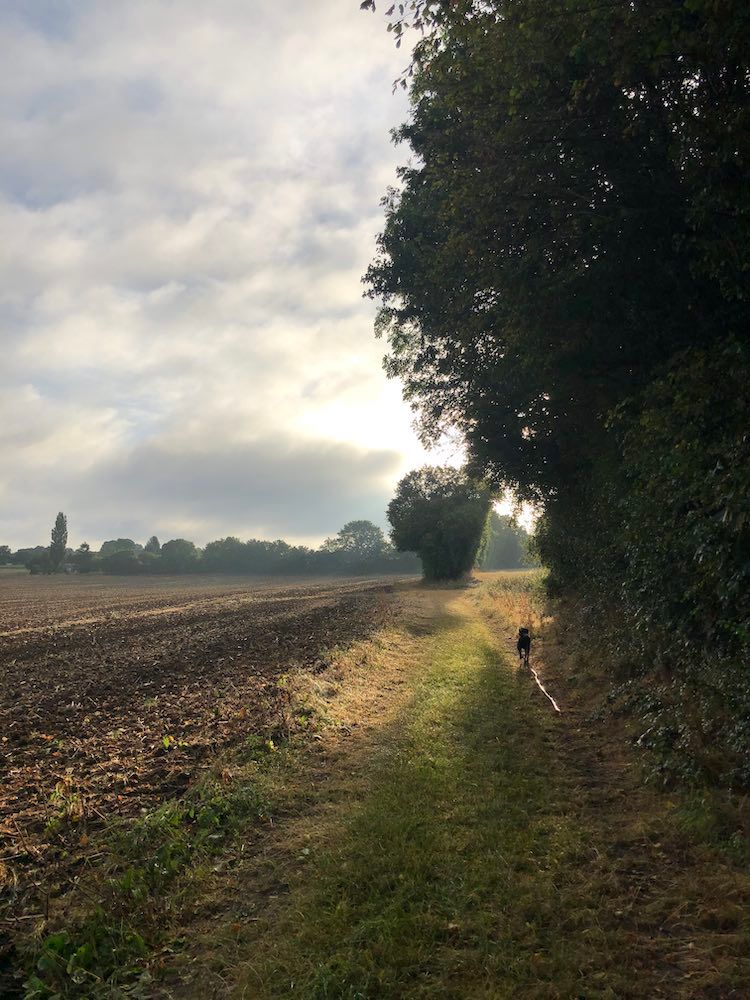A Human Hive
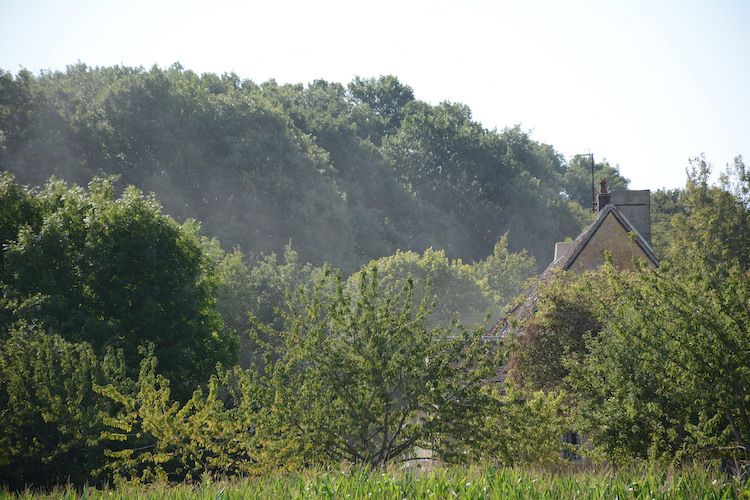
Friday, 31 July
Our place in the Perche this morning is more crowded than Paris. Or so it seems. We left the eerily quiet city early today in order to beat the heat (37°C/98.6°F) and the hordes of holiday makers expected on the roads at the beginning of this chassé-croisé (changeover) July-August weekend and arrived to a human hive of activity.
The farmer who cultivates our fields was mowing hay.
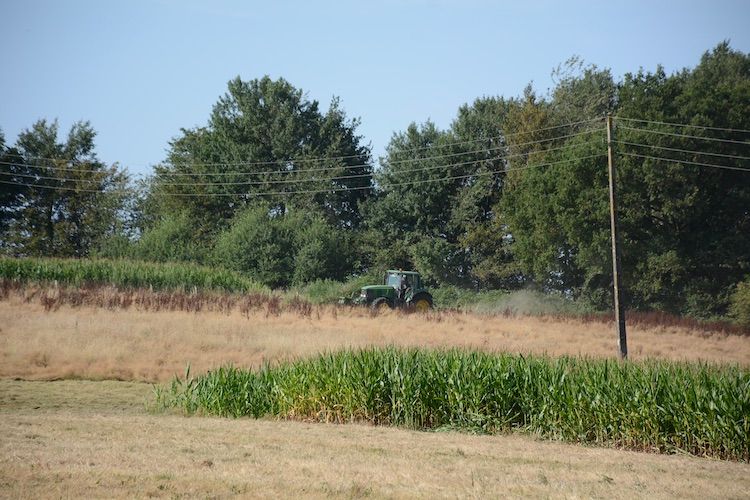
These three men were sorting the large bank of felled thuja that until two weeks ago lined the lane and cut the house off from the rest of the world with a dissuasive power worthy of the Berlin wall.
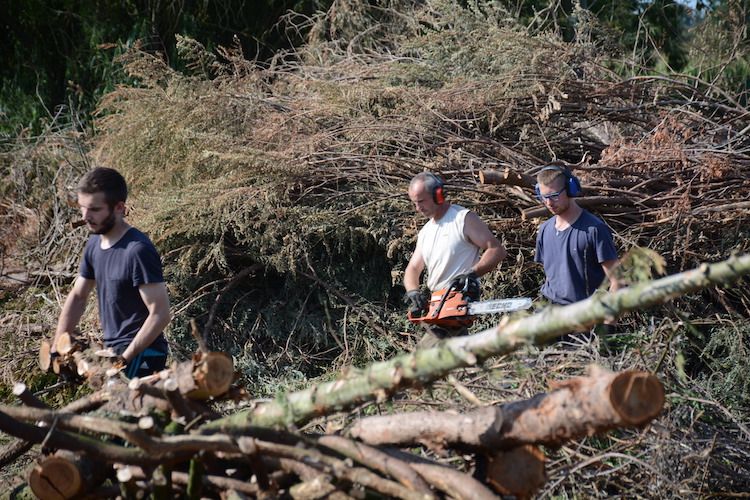
Claire, our agro-eco-garden guru, was checking on their progress. I was not the only one happy to see her.
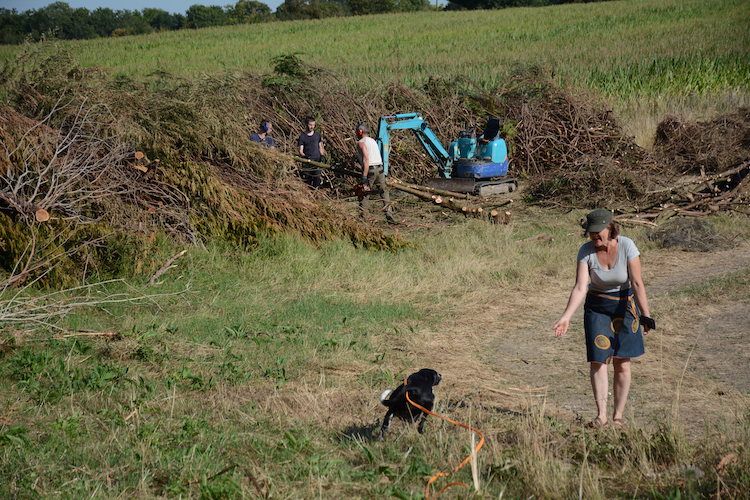
At the house the four faithful masons were arching the doors of the reappropriated barn.
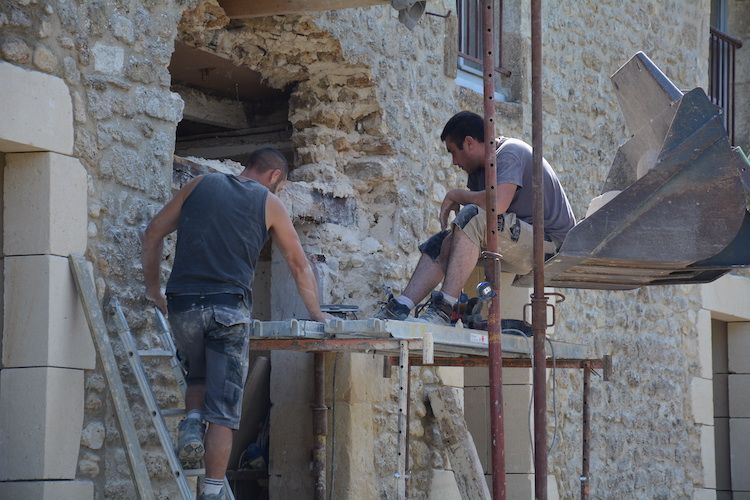
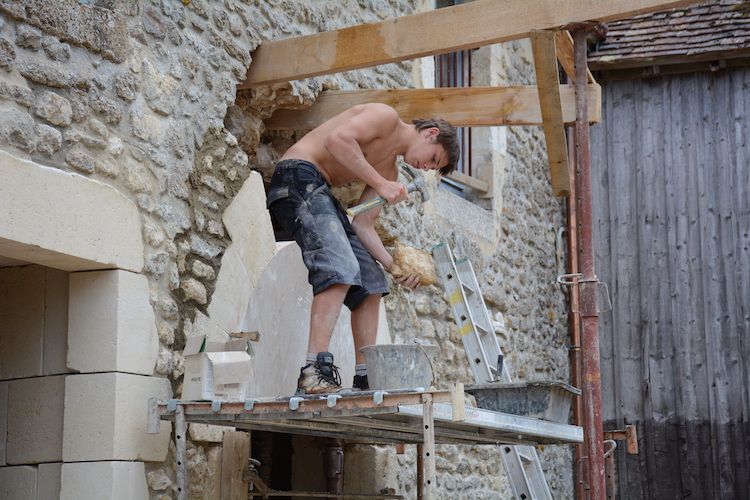
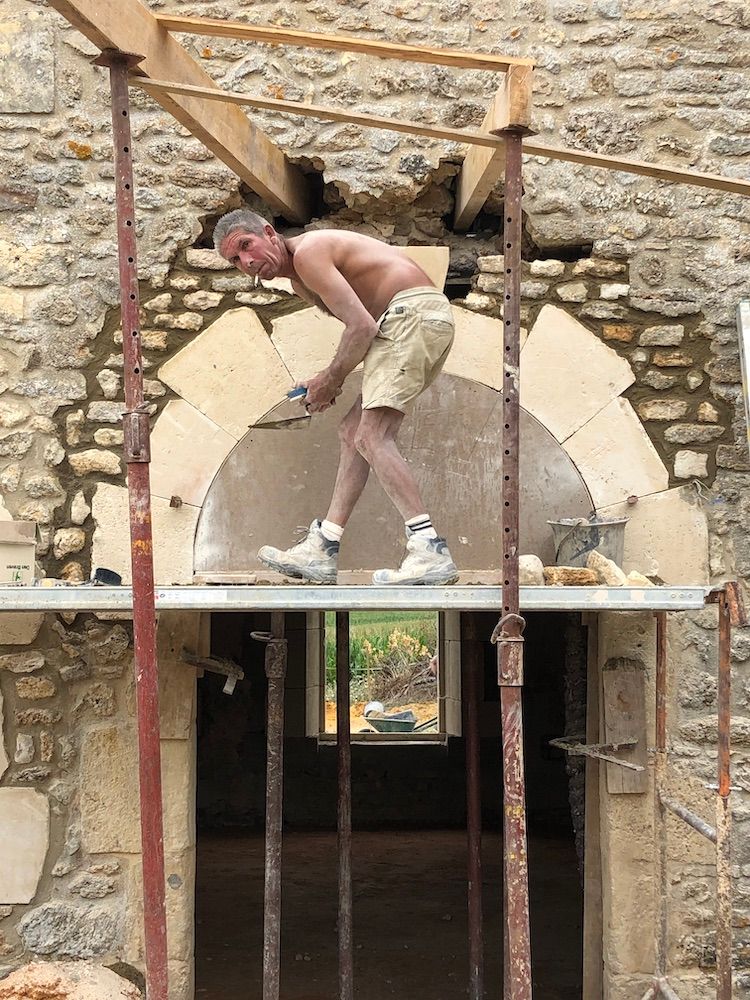
They have made a lot of progress over the last weeks and we continue to marvel at their skill in handling the heavy stone, in turning it, really, into works of art.
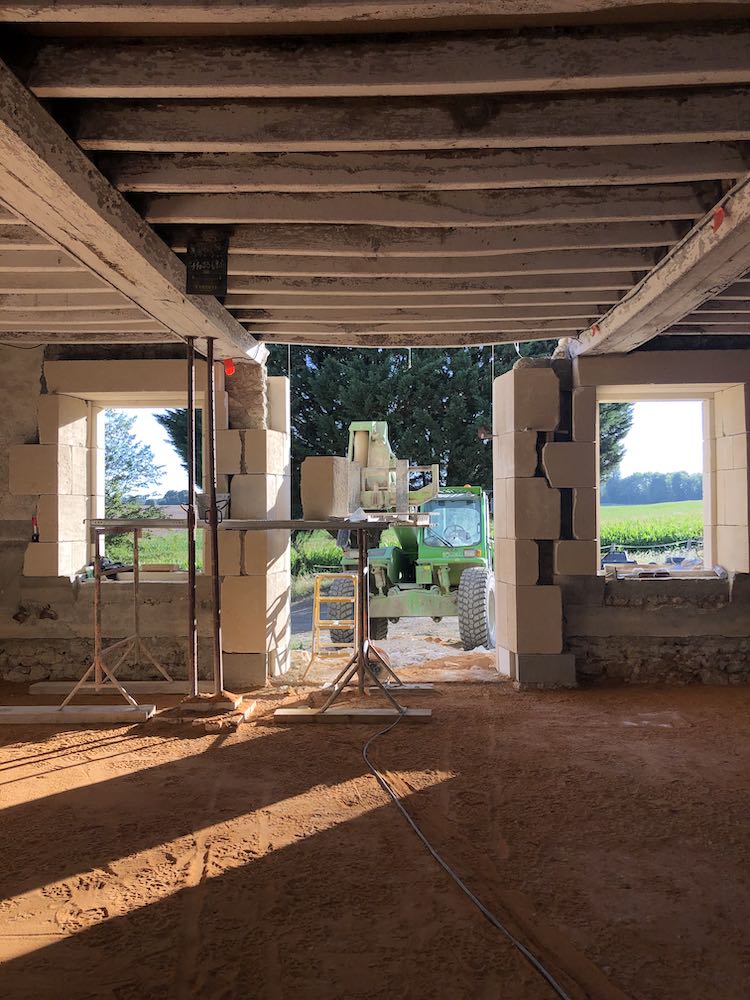
Though the working population is particularly dense today, our house is often busier than you'd expect of a place at the end of a road to nowhere. Last week, for example, on Claire's suggestion the local ornithologist Valentin stopped by to assess the swallow situation (more on that in a minute) and advise how we might attract higher numbers next year. In examining the possibilities, he discovered that a barn owl has moved into the hay loft that we opened up for the swallows but that has not been to their liking.
The next day the local historian Eric Y, who is working on the history of the property, came round with this pile of parchment…

…the legal documents for the its first two hundred years. They reside in a cupboard at a nearby château and Eric, who knows the owner, had them on loan. You’ll be hearing more about this once he has finished his study but we learned quite a lot just from this one visit. The first mention of the land, for instance, dates to the 1400s and the first deed was written on 19 February 1555.

The seigneurie itself was built in 1588 as a link in a chain of similar seigneurial edifices that formed the first of two defensive rings around the town of Bellême.
Looking inside the house, he confirmed that, except for the addition of a storage annex in the 19th century (now serving as furnace/laundry room and David's office), not much of the layout has changed in 500 years. The ground floor was and still is comprised of an entry with a room on either side, each with the original walk-in fireplace ...
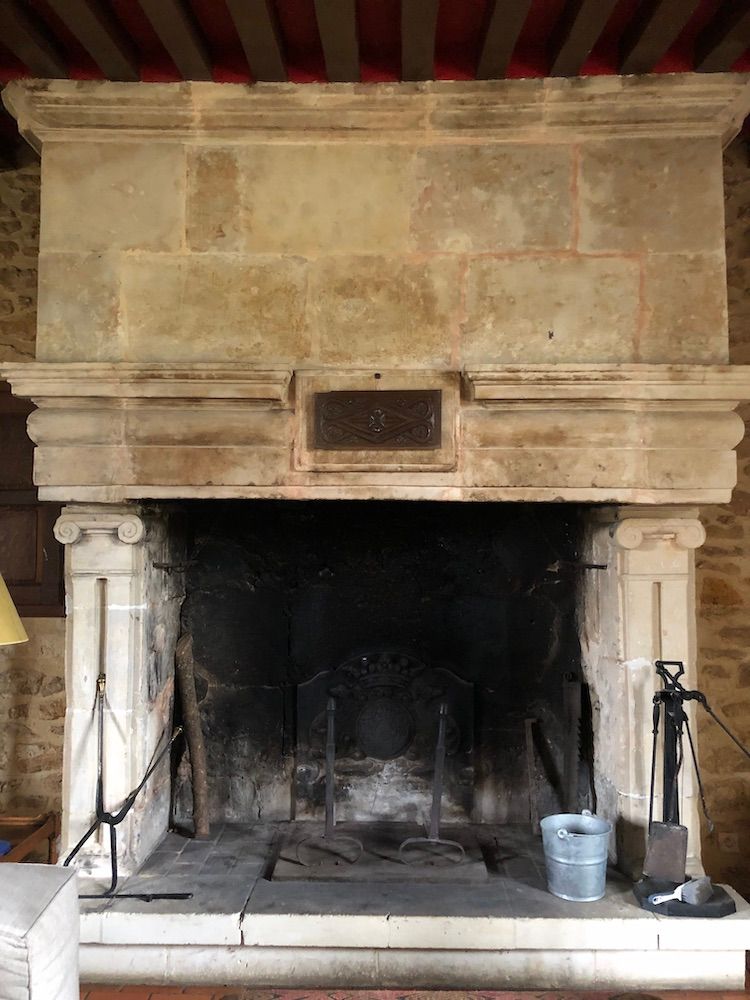

Eric also resolved the lingering mystery of whither this arch in the living room...
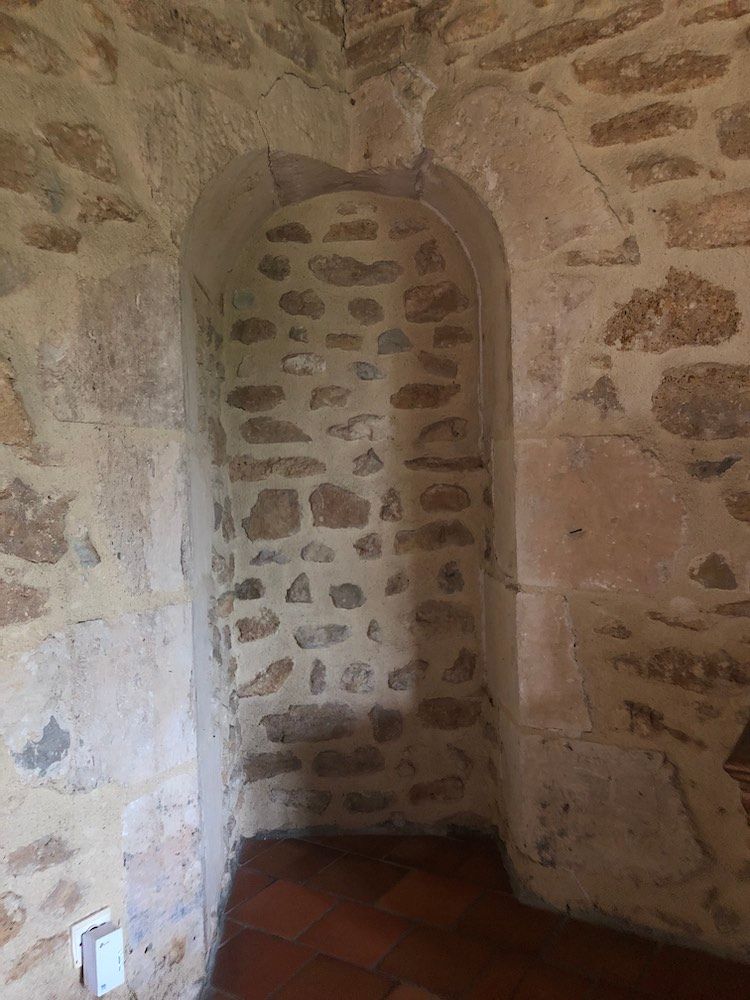
We had heard that it once led to a tower...and we had heard that no tower ever existed. From stones protruding on the outside wall, Eric concluded that it was simply and unceremoniously the door to a suspended latrine.
The upstairs, now bedrooms and my office, was originally a pigeonnier, or dovecote. Eric knew this because of the small windows at either end of the house, one of them with a landing pad...
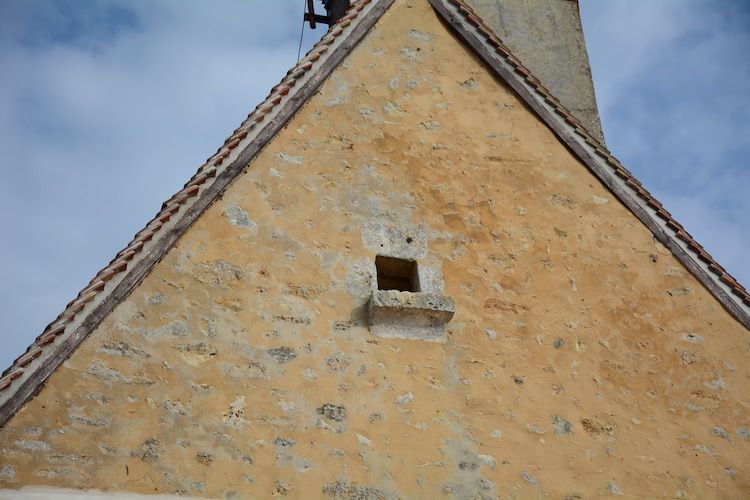
...and the inside traces of which sit right above my head as I write...
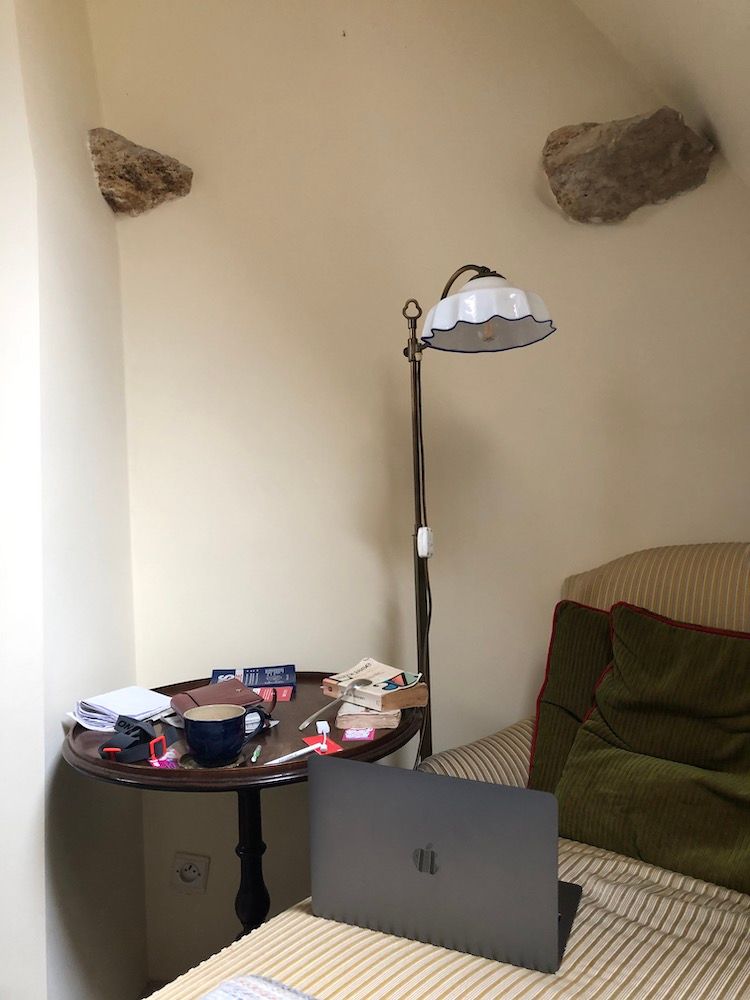
It's evening now and everyone's gone but us and the swallows, who are swooping madly about - though not in and out of the quarters David so carefully set up for them during our confinement in April.

In fact it was short-sighted of us to think we could successfully relocate the swallows this year. Once the masons got to work knocking holes in what had been their summer home, the birds abandoned their shack and returned to the intact nests of their avian château. They put up with the noise and dust, staying away while work is in progress but returning as soon as the masons are having lunch or have gone home for the day. These birds need to be tenacious. Valentin the ornithologist told us that only 25% of the young survive their first migration, which will start in just a few weeks.
With the workers about to leave on holiday, the swallows will spend their last days with us in peace. It's fair to say that despite being grateful for all the recent activity, we too are looking forward to a quiet August.
Happy, healthy summer, to one and all. Rendez-vous en septembre.
